We Will Miss You, Maurice Sendak
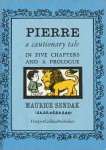 May 8, 2012, the children’s book world lost an honored artist/author/illustrator, Maurice Sendak. Most people remember his book Where the Wild Things Are, but Sendak was by no means a one-hit wonder. He wrote and/or illustrated dozens of children’s books, so today, I’m mentioning a few of my favorites by the master from his 1962 collection, “The Nutshell Library”.
May 8, 2012, the children’s book world lost an honored artist/author/illustrator, Maurice Sendak. Most people remember his book Where the Wild Things Are, but Sendak was by no means a one-hit wonder. He wrote and/or illustrated dozens of children’s books, so today, I’m mentioning a few of my favorites by the master from his 1962 collection, “The Nutshell Library”.
Pierre: a cautionary tale in five chapters and a prologue is a favorite from my childhood. Pierre is so apathetic that he answers “I don’t care,” in any situation, even when a lion asks, “Then I’ll eat you, if I may.” Don’t worry, Pierre is fine when he’s shaken out of the lion by the doctor, and his close call with death has made him realize that he does care after all.
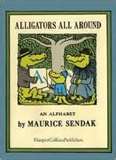 Alligators All Around is Sendak’s clever, alliterative alphabet book. It is short and snappy enough to keep the interest of the littlest ones, but the humorous art is sly enough for older kids as well:
Alligators All Around is Sendak’s clever, alliterative alphabet book. It is short and snappy enough to keep the interest of the littlest ones, but the humorous art is sly enough for older kids as well:
“A: alligators all around
B: bursting balloons
C: catching colds
D: doing dishes”
It’s a great writing prompt for a whole class or small group activity, writing two word alliterative phrases for each letter of the alphabet, choosing an A animal as the character to tie all the letters together.
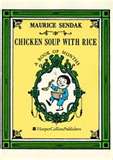 “Whoopy once
“Whoopy once
whoopy twice
whoopy chicken soup
with rice.”
I adore Chicken Soup with Rice: a book of months. I visited a first grade classroom where the teacher had a poster for each month with the verse by Sendak for children to illustrate. Every month has the repetition of (something) once, (something) twice, (something) chicken soup with rice, so even emerging readers can chime in with confidence.
The “Nutshell Library” books were set to music by Carole King. You can find the songs on her cd “Really Rosie”, and you can find the animated television special made in 1975 on VHS if you roll old school. I love how kids instantly spot the similarities of Pierre and the boy on the cover of Chicken Soup with Rice to Max from Where the Wild Things Are. Share some Sendak books with your kids and talk about the similarities and differences in the art and in the plots. Play the music from “Really Rosie” and let your students sing the “Nutshell Library” books so your students can be, to paraphrase Alligators All Around, “S: singing Sendak!”
Read MoreYou Never Heard of Sandy Koufax?!
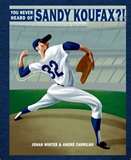 Baseball season is here, and while Detroiters are cheering on Tigers pitcher Justin Verlander, many kids are going (pea)nuts over Sandy Koufax. Never heard of him? I hadn’t either, until I read You Never Heard of Sandy Koufax?! by Jonah Winter and Andre Carrilho. This picture book biography hits it out of the park. It has a conversational writing style, slick illustrations, cool statistics that sports fans love, and a subject you can’t help but admire. Sandy Koufax was a teenager from Brooklyn playing for the Dodgers back when there weren’t many Jews in professional baseball. His career took more twists than a curve ball, going from the dubious honor of throwing the most wild pitches in 1958 to becoming “the greatest lefty who ever pitched”. He struck out Mickey Mantle, Willie Stargell, even Willie Mays. Koufax was supposed to pitch the first game of the 1965 World Series, but he sat the game out – it was a Jewish High Holy Day, and he honored his religious beliefs by not working that day.
Baseball season is here, and while Detroiters are cheering on Tigers pitcher Justin Verlander, many kids are going (pea)nuts over Sandy Koufax. Never heard of him? I hadn’t either, until I read You Never Heard of Sandy Koufax?! by Jonah Winter and Andre Carrilho. This picture book biography hits it out of the park. It has a conversational writing style, slick illustrations, cool statistics that sports fans love, and a subject you can’t help but admire. Sandy Koufax was a teenager from Brooklyn playing for the Dodgers back when there weren’t many Jews in professional baseball. His career took more twists than a curve ball, going from the dubious honor of throwing the most wild pitches in 1958 to becoming “the greatest lefty who ever pitched”. He struck out Mickey Mantle, Willie Stargell, even Willie Mays. Koufax was supposed to pitch the first game of the 1965 World Series, but he sat the game out – it was a Jewish High Holy Day, and he honored his religious beliefs by not working that day.
I love biographies that show how long and bumpy the road to success is. Sandy Koufax threw his uniform in the trash after one awful season, basically quit the team. He returned the next season, not to instant success, but to more struggles which he had to work through in order to become the great player we now know. Reading You Never Heard of Sandy Koufax?! can inspire a wonderful “self smart” discussion with your kids. When have you felt the urge to give up? What did you do to get past that feeling? What are you really good at? What do you struggle with? What do you wish you were better at, and what could you do to improve? Andre Carrilho created some super-cool art for this book (the cover looks like it’s moving!) including some pieces that look like baseball cards. Have your students make a “baseball” card of themselves, a card that shows them as successful adults. Kids can draw themselves on the front in action (playing a sport, making art, doing what they love to do) and they can include statistics on the back like “2020: first author to win both the Caldecott and the Newbery for the same book”. (OK, that statistic is on my future dream card, but I’ll let others borrow it.) Kids can keep these cards as inspiration to get them through the slumps, and who knows? One day, those statistics they created might come true!
For more information, visit Andre Carrilho’s website: andrecarrilho.com
Read More
My Heart Will Not Sit Down
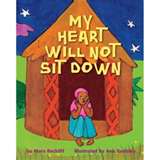 I read hundreds of picture books a year as a children’s librarian, and My Heart Will Not Sit Down by Mara Rockliff and illustrated by Ann Tanksley is one of the truly unforgettable books of 2012 for me. Kedi lives in Cameroon and her teacher is from America. He tells Kedi and his students about the Great Depression that is causing people to go hungry in his homeland. Although America is far away “across the great salt river”, Kedi feels compassion for the hungry children and her heart will not sit down. She finds a way to raise money in her small village, a village where money is scarce, to send to those in need in the United States.
I read hundreds of picture books a year as a children’s librarian, and My Heart Will Not Sit Down by Mara Rockliff and illustrated by Ann Tanksley is one of the truly unforgettable books of 2012 for me. Kedi lives in Cameroon and her teacher is from America. He tells Kedi and his students about the Great Depression that is causing people to go hungry in his homeland. Although America is far away “across the great salt river”, Kedi feels compassion for the hungry children and her heart will not sit down. She finds a way to raise money in her small village, a village where money is scarce, to send to those in need in the United States.
The author’s note at the end is what really got me. This book is based on a true event. “In 1931,” Rockliff writes, “the city of New York received a gift of $3.77 to feed the hungry. It came from the African country of Cameroon.” She goes on to explain that although $3.77 wasn’t a great deal of money even in the 1930’s, “for the villagers in Cameroon who sent it… the money would’ve been a fortune.” The beauty of this village of people hearing of suffering elsewhere and sharing what little they have is so moving. Rockliff writes about the worldwide experience of compassion: children in Guatemala collecting cans to raise money when they hear about the hungry children in Malawi, the Papua New Guinea islanders sharing food with the American Peace Corps volunteers. Generosity and compassion are qualities we can all embrace, not just the lucky few of us with money in the bank and food in our pantries.
I’d share this book with 1st graders on up to high school students, but I’d make sure the little ones understood that the “great salt river” Kedi talks of is the enormous Atlantic Ocean. To hit the Common Core State Standard of Integrating Knowledge and Ideas, pair this with 14 Cows for America by Wilson Kimeli Naiyomah and Carmen Agra Deedy, illustrated by Thomas Gonzalez and talk about ways the global community can care for each other. No matter what the economic situation of the community we live in, we all have the ability to help someone. Brainstorm with students about causes dear to our hearts – animals, people in need in a certain area of the world, the environment – and think of a way that we can help. One year my third grade students helped to make a quilt that we donated to a local shelter in need of blankets, and the generosity of our class inspired other families to give pajamas and even a bed. Share My Heart Will Not Sit Down and see what good things it can inspire!
For more information, visit mararockliff.com, or carmenagradeedy.com.
Read MoreMake Poetry Delicious with “Toasting Marshmallows”
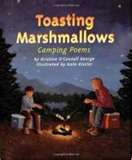 I’ve had the pleasure of teaching poetry lessons to more than 175 students this week, and one sure-fire hit book I shared was Toasting Marshmallows: Camping Poems written by Kristine O’Connell George and illustrated by Kate Kiesler. Before I shared the title poem with the students, I told them how eager I am to go camping this summer. Amidst waving hands and shouts of “Me, too!” I talked about my memories of campfires – the smoky smell of burning wood, the welcome warmth after the sun goes down, and, of course, the requisite toasting of the marshmallows. I read aloud Kristine George’s poem in which we hear about two kinds of marshmallow toasters – those who like to patiently roast the marshmallow until the “pillowed confection” becomes “golden perfection” and those who shove ’em on a stick, burn ’em, flick off the soot, and eat ’em, char and all. The only thing that could’ve made the kids more eager to get their hands on this book when I was done with the lesson would’ve been to bring in marshmallows and build a campfire on the playground (a librarian can dream, can’t she?)
I’ve had the pleasure of teaching poetry lessons to more than 175 students this week, and one sure-fire hit book I shared was Toasting Marshmallows: Camping Poems written by Kristine O’Connell George and illustrated by Kate Kiesler. Before I shared the title poem with the students, I told them how eager I am to go camping this summer. Amidst waving hands and shouts of “Me, too!” I talked about my memories of campfires – the smoky smell of burning wood, the welcome warmth after the sun goes down, and, of course, the requisite toasting of the marshmallows. I read aloud Kristine George’s poem in which we hear about two kinds of marshmallow toasters – those who like to patiently roast the marshmallow until the “pillowed confection” becomes “golden perfection” and those who shove ’em on a stick, burn ’em, flick off the soot, and eat ’em, char and all. The only thing that could’ve made the kids more eager to get their hands on this book when I was done with the lesson would’ve been to bring in marshmallows and build a campfire on the playground (a librarian can dream, can’t she?)
Kristine George has a teacher’s guide full of cool extension ideas for Toasting Marshmallows: Camping Poems on her website: www.kristinegeorge.com. I love the idea of bringing in flashlights to use while writing poems like the four haiku about flashlights George included in her book, or working with metaphor in a writing-skills lesson. George compares the flashlight beam in the dark to a round stepping stone. What else might a flashlight beam be like? Turn off the lights, turn on the flashlights, and let the brainstorming begin! After sharing this book of poetry with your kids, you’ll hear lots of “S’more! Read s’more!”
Read MoreUse Silver Seeds to plant poems
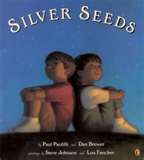 This is one of my go-to books I use every April to celebrate Poetry Month. Silver Seeds by Paul Paolilli and Dan Brewer with paintings by Steve Johnson and Lou Fancher is simply beautiful. The poems are all about nature, and they’re all written in a form many kids recognize. When I show the first poem,
This is one of my go-to books I use every April to celebrate Poetry Month. Silver Seeds by Paul Paolilli and Dan Brewer with paintings by Steve Johnson and Lou Fancher is simply beautiful. The poems are all about nature, and they’re all written in a form many kids recognize. When I show the first poem,
“Down goes the moon
And up comes the sun,
Welcoming the
New Day”
lots of hands wave in the air, “It’s an acrostic!” Yes, these poems have a word as the topic of the poem written from top to bottom on the page, and each letter starts a line of the poem. When we teach our kids to begin writing poetry, it’s an easy form to follow. I love that the poems in this book aren’t just one word per letter, but you can show kids how to write acrostic poems using either one word to make a descriptive list, or several words per line to paint a broader picture.
Silver Seeds is a great poetry book to hit the Common Core State Standard of Range of Reading (RL. 10 if you’re keeping score) in the elementary grades, but it’s also a cool writing activity to get kids to use the dictionary. I model for the students how to write an acrostic poem about myself using my first name. I ask, “What could I put for K?” Krazy, Kool, Kitten, and Kid are usually suggested, but none of these really works for me. How can I find a K word that I think describes me? I open up the dictionary and begin to browse. Perhaps I am kaput (there are days when this is too accurate!), or keen, or kissable. I decide that I am Kindly, and we can go on to brainstorming and looking for R words. Using the dictionary to find words to describe themselves is a fun way to use the resource and you’ll be thrilled at some of the new adjectives your students learn. A love of language, a love of poetry, planted with Silver Seeds.
For more information, visit johnson&fancher.com
Read MoreIt’s time to Bawk & Roll!
 Elvis Poultry and his back-up chicks are back, so hop on this tour bus and get ready to Bawk & Roll! Tammi Sauer and Dan Santat made this follow-up book just as irresistible as their first tail-shaker, Chicken Dance. Marge and Lola are now officially back-up dancers for the King of the Roost himself, Elvis Poultry. But when the lights go down and the curtains go up, Marge and Lola are truly chicken, too overwhelmed to flap a wing or shake a feather. Picturing the crowd in their underwear doesn’t help them (although your kids will looove that scene!), relaxing with bubble baths and meditation doesn’t do the trick, but with a little help from their friends, these chickens end up really cooking on stage.
Elvis Poultry and his back-up chicks are back, so hop on this tour bus and get ready to Bawk & Roll! Tammi Sauer and Dan Santat made this follow-up book just as irresistible as their first tail-shaker, Chicken Dance. Marge and Lola are now officially back-up dancers for the King of the Roost himself, Elvis Poultry. But when the lights go down and the curtains go up, Marge and Lola are truly chicken, too overwhelmed to flap a wing or shake a feather. Picturing the crowd in their underwear doesn’t help them (although your kids will looove that scene!), relaxing with bubble baths and meditation doesn’t do the trick, but with a little help from their friends, these chickens end up really cooking on stage.
For those of us looking for great books to compare/contrast to meet the Integration of Knowledge and Ideas Common Core State Standard (RL 3.9 if you’re playing CCSS Bingo at home), share Chicken Dance and Bawk & Roll with your kids. Compare what Marge and Lola do in each book – how they overcome their fears, how the other characters in the books help them, etc. Tammi Sauer and Dan Santat have so much fun, free stuff on their website: elvispoultrybooks.com. You can print off and make your own rockin’ Elvis Poultry sunglasses and wear them while you watch the author and the illustrator teach you how to do different dances! These books would be fantastic for Readers’ Theater scripts and so fun and easy for a Storybox if you put cut-out characters with book for kids to retell the story. Guaranteed, all your little ones will say after hearing Bawk & Roll, “Thank you. Thankyouverymuch.”
 Follow the Bawk & Roll tour bus as it rolls across the internet:
Follow the Bawk & Roll tour bus as it rolls across the internet:
TEAM BAWK
April 2-6 Rob Sanders: Picture This!
http://robsanderswrites.
April 3 Julie Danielson: Seven Impossible Things Before Breakfast
http://blaine.org/
April 4 Jennifer Bertman: From the Mixed-Up Files of Jennifer Bertman
http://writerjenn.blogspot.
April 4 Kristen Remenar: Author, Librarian, National Speaker – Hey, that’s me! 🙂
April 5 Julie Hedlund: Write Up My Life
April 6 Jennifer Rumberger: Children’s Author
http://www.jenniferrumberger.
For more information, visit tammisauer.com or dansantat.com.
Read MoreGood news!
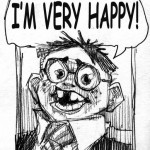 I am so excited to announce that the Remenar seminar is expanding! In January of 2013 I’ll start teaching a new seminar tentatively titled “The Best Books to Teach the Common Core State Standards in Reading (grades K-3)“. My seminar covering great books for preschoolers and kindergartners is still available through the Bureau of Education & Research (www.ber.org). I have a stack of books I’ve pulled to include in the new handbook, but I thought I’d ask all you parents, teachers, librarians, authors, and illustrators: what picture books do you love to share with kids in grades K-3? I’d love to include your favorites! You can post suggestions on my website, my Facebook page, or email me at kristenremenar@gmail.com.
I am so excited to announce that the Remenar seminar is expanding! In January of 2013 I’ll start teaching a new seminar tentatively titled “The Best Books to Teach the Common Core State Standards in Reading (grades K-3)“. My seminar covering great books for preschoolers and kindergartners is still available through the Bureau of Education & Research (www.ber.org). I have a stack of books I’ve pulled to include in the new handbook, but I thought I’d ask all you parents, teachers, librarians, authors, and illustrators: what picture books do you love to share with kids in grades K-3? I’d love to include your favorites! You can post suggestions on my website, my Facebook page, or email me at kristenremenar@gmail.com.
P. S. Thank you to my talented author/illustrator husband Matt Faulkner for the cute drawing, and no, it’s not a portrait of me. My neck is bigger.
Read More






